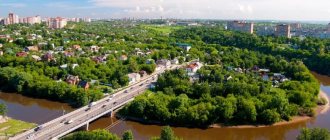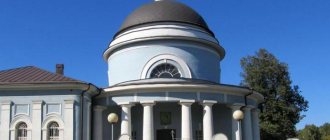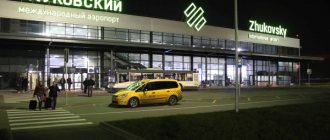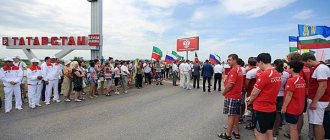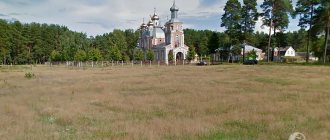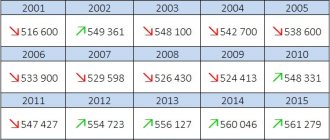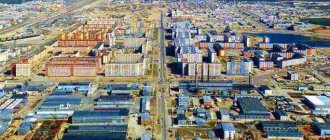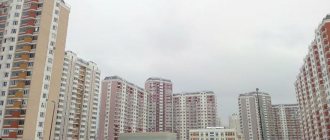Balashikha
Video: Balashikha
Basic moments
Since ancient times, Balashikha has been a center of textile production. And today, various enterprises operate in the city, for example, a foundry and mechanical plant, an aviation corporation, etc.
The modern city of Balashikha grew up on the site where ancient villages and hamlets were previously located - the villages of Novoe, Pehra-Pokrovskoye, Pehra-Yakovlevskoye. Today, the most interesting part of the city for tourists is the New Quarter.
Tourists should visit Balashikha to admire the beautiful estates of Pehra-Yakovlevskoye, Gorenki and Poltevo, take memorable photographs against the backdrop of the wonderful nature of Balashikha and visit the magnificent churches - Alexander Nevsky, Transfiguration of the Lord, etc.
Climate
The climate of Balashikha is moderate continental, with pronounced seasonality. The number of cold days per year with temperatures below 0 is about 120-135 days from November to March. The coldest month of the year is January, the warmest is July.
Attractions
Sights of Balashikha - beautiful architectural ensembles dating back to the 18th-19th centuries. and located within the city. Thus, we recommend that tourists visit the estates of Gorenki (today a sanatorium), Pehra-Yakovlevskoe, Poltevo.
Other interesting sights of Balashikha are the churches: Intercession (XIX century), Nativity of the Virgin Mary (XIX century), Transfiguration Church with rich interior decoration and in the past - an iconostasis, in the painting of which the Italian master Stefan Torelli took part and which, unfortunately, has not been preserved.
We recommend that tourists pay attention to such attractions of Balashikha as museums: the Local History Museum in the regional center of the city, the Museum of Air Defense Forces, and the Art Gallery. It is also interesting to see the Radio Mast, and then take a walk in the Balashikha City Park and take wonderful photographs as a souvenir.
Excursions
Interesting excursions in Balashikha include a sightseeing tour of the city, a visit to the Gorenki estate, as well as other estates - Pehra-Yakovlevskoye, Trinity-Kainaradzhi with a magnificent church built in the style of French classicism.
Another interesting excursion in Balashikha is a visit to the Local History Museum, which reflects the history of the development of the region. A visit to the Art Gallery in Balashikha will also give tourists a lot of pleasure.
Story
The history of Balashikha began a very long time ago - for example, the first settlements in the vicinity of today's city existed in the 7th century BC. In the 10th century, Slavic tribes lived in this territory. Let us note that in Balashikha and its environs, scientists have discovered over 350 mounds, in particular, Vyatichi and Krivichi.
The most ancient part of modern Balashikha is the Novsky quarter, which until 2004 was the village of Novaya. Interestingly, the first mention of this settlement dates back to the 14th century. Soon other settlements appeared - the villages of Pehra-Yakovlevskoye and Pehra-Pokrovskoye, their names come from the tribe that lived in this fertile land back in the days of Vladimir Rus.
The history of Balashikha began in 1830: it was then that Prince Trubetskoy opened a cloth factory here. In 1837, the Balashin manufactory was founded. The region was gradually developed; in 1925, the settlement “Unification” appeared, intended for factory workers.
In 1939, the history of Balashikha as a city began thanks to the resolution of the Presidium of the Supreme Council. Balashikha included such settlements as the village of Pervomaisky, Gorenki, Grabari, etc. After the Great Patriotic War, active construction of the city and industrial development took place in Balashikha. In 1954, a Culture and Recreation Park was opened with attractions, a summer theater and a billiard room.
In 1960, the Balashikha district (part of it) joined Moscow.
Accommodation
Hotels in Balashikha are several hotels of the economy category, a night's stay in which will cost tourists from 350 rubles. These are Balashikha hotels such as “Adonis” and “Sport” on the territory of a sports club.
Another option is to stay at the Druzhba sanatorium, where you can improve your failing health.
Balashikha hotels of a higher category include the East Gate Hotel 4*. A day's stay in this hotel will cost tourists 4 thousand rubles.
Sports and active recreation
Active recreation in Balashikha includes playing billiards, bowling, walking around the city, and cycling.
There are 2 football teams in Balashikha. The city also hosts international junior tennis tournaments, as well as boxing tournaments.
Tourists can play hockey at the Balashikha Arena sports complex. A ski resort called “Fox Mountain” has been opened in the south of Balashikha. Not far from it is Q-Park, where you can go snowboarding.
In addition, tourists can enjoy the Balashikha equestrian sports complex and the Wake Family Park, where they can practice wakeboarding.
Transport
Public transport in Balashikha is an extensive network of bus routes (16 routes in total), minibuses, as well as a passenger taxi, which can be called from any city hotel. We draw the attention of tourists that the cost of travel should be discussed in advance.
Souvenirs
Balashikha souvenirs include refrigerator magnets, decorative plates, and cups with the symbols of the city.
Also interesting are souvenirs from Balashikha, such as locally produced textiles.
In addition, in Balashikha they make good souvenirs from wood - wall panels, chess, neat elegant boxes, etc.
It is interesting to take beautiful photographs of Balashikha estates and create a memorable photo album, which will also become an interesting gift from Balashikha.
How to get there
Tourists can get to Balashikha from Moscow in several ways:
- By car along Entuziastov Highway or Shchelkovskoye Highway. Balashikha is only 5 km from the Moscow Ring Road. But the travel time from the center of Moscow, taking into account, is about 40 minutes.
- By bus from the metro stations "Shchelkovskaya", "Yuzhnaya", "Partizanskaya", "Izmailovskaya", "Novogireevo". On average, the journey takes from 30 to 40 minutes.
- By train from Kursky station. Travel time is 40 minutes.
Expansion of Moscow for 2030 and new borders on the map. What's planned?
There are both disadvantages and positive aspects here. This petition has some valid as well as rational aspects. It is quite problematic to disagree with them. Additionally, students constantly travel to the capital, who will also benefit from the benefits offered.
Thus, most likely in the very near future Balashikha will turn out to be the real part of Moscow. Although, the final decision lies with the local population. They must decide what will happen next.
Where can you get a coronavirus test in the Moscow region for free?
What's bad about it?
Sobyanin spoke about the annexation of Balashikha to Moscow as if it was already a fait accompli. But people still have time to think about how much it makes sense to them. Moscow is a rapidly developing progressive city, but at the same time there is more corruption and banditry. The construction business devalues the value of individual lives. Everything revolves around commerce and the thirst for profit.
On the one hand, the area can flourish technologically, but on the other, it can become a platform for the oligarchy to play for endless enrichment. Such movements may simply mean a division of market shares and a struggle for resources. Therefore, the issue needs careful consideration. It is important that people really understand what is happening and not be fooled by beautiful slogans. Of course, such a solution has its advantages, but won’t they be less than the negative effects?
Nature[ | ]
Losiny Ostrov National Park
The urban district of Balashikha is located within the Meshcherskaya Lowland and is a sand and pebble plain of glacial origin with a slope to the east. The soils are mostly sandy, soddy-podzolic, and in some places podzolic-boggy.
The main river of the city district is the Pekhorka, a left tributary of the Moscow River, which forms several large and picturesque ponds within the city limits. The Gorenka River, which currently flows from Lake Mazurin, located northwest of the city, flows into it. The river is connected by a special canal to the “bucket” reservoir at the Eastern Waterworks. This canal discharges excess Volga water coming to the station from the Akulovsky hydroelectric complex, thereby flooding the Pekhorka and Moskva Rivers.
In addition to rivers, in the territory of the urban district there are numerous lakes, including Baboshkino, Maryino, Yushino (second), Bezmenovsky quarry (Kozlovo, third), Lake Mazurinskoe.
Balashikha is surrounded by forests, mostly mixed. From the west - spruce-broadleaf, from the east - pine-broadleaf. There is a lot of woody vegetation within the city itself: forests wedge into all the main areas of Balashikha.
There are ancient manor parks in a ring around the city. From the south there are the parks of Gorenok and Pekhra-Yakovlevsky, Saltykovka, in the north - the park of the Pekhra-Pokrovskoye estate. In each of these parks, plants were planted that were not found in the wild in these places. Many of them settled down well in their new place. Until now, there are introduced plants around Balashikha - plants brought here by humans.
Years of the Great Patriotic War
During the war years, more than 20 thousand residents of Balashikha went to the front. More than 3,400 of them fell in battle or died from wounds, and more than 4,200 were missing. In July 1941, a people's militia battalion was formed in the Balashikha region. Major Nikolai Kazakov was assigned to command them. On July 31, this battalion, as part of the 2nd Moscow People's Militia Division, entered its first battles. Almost the entire division's personnel died, being surrounded near Vyazma and continuing to fight without receiving reserves, ammunition or food.
More than 8 thousand people from the civilian population of Balashikha in 1941 worked on the construction of defensive fortifications near Moscow.
The Balashikha military factories were evacuated to Kamensk-Uralsky, Nizhny Tagil, Kazan and Kuibyshev. There, the teams of these evacuated enterprises put them into operation as soon as possible. During the war years, they produced 10 times more military products than in Balashikha in the pre-war years.
The ammunition plant was not evacuated and continued its work. In 1943, an armored tank repair plant began operating in Balashikha. After the war, it was repurposed as a truck crane factory.
In order to produce liquid oxygen for military needs, the installation of appropriate equipment was resumed in Balashikha in 1944. Academician Pyotr Kapitsa supervised this work. The first production was obtained in October 1944 using the world's largest installation.
The cotton spinning and cloth factories not only continued to operate after the outbreak of the war, but were also among the few light industry enterprises in the region that managed, even in the most difficult conditions of wartime, when a significant part of the personnel was mobilized into the army, to continue to regularly fulfill the plan for all main assortment indicators .
Notes[ | ]
- from the point of view of the administrative-territorial structure
- from the point of view of the municipal structure
- ↑ 1234
Law of the Moscow Region of December 30, 2014 No. 208/2014-OZ “On the transformation of the Balashikha urban district and the Zheleznodorozhny urban district, on the status and establishment of the boundaries of the newly formed municipality” - ↑ 1234
The permanent population of the Russian Federation by municipalities as of January 1, 2021 (Russian). Date accessed: April 27, 2021. Archived May 2, 2021. - OKTMO. 179/2016. Central Federal District
- Law of the Moscow Region of January 31, 2013 N 11/2013-OZ “On the administrative-territorial structure of the Moscow Region” (as amended on November 25, 2015)
- officially capitalized as Urban
Okrug - Law of the Moscow Region of December 29, 2004 No. 197/2004-OZ “On granting the municipal formation “Balashikha District of the Moscow Region” the status of an urban district and approving the border of the Balashikha urban district”
- Law of the Moscow Region dated July 7, 2006 No. 99/2006-OZ “On the urban district of Balashikha and its border”
- Resolution of the Head of the Balashikha urban district of the Moscow region dated February 26, 2007 No. 236/3 “On the streamlining of targeted farming in the territory of the Balashikha urban district”
- Resolution of the Governor of the Moscow Region dated May 13, 2011 No. 41-PG “On amendments to the Registration Data of administrative-territorial and territorial units of the Moscow Region”
- D-1-662pa “On the unification of the cities of regional subordination of the Moscow region Balashikha and Zheleznodorozhny and amending the Law of the Moscow region “On the administrative-territorial structure of the Moscow region””
- Documents (unspecified)
(inaccessible link). Archived from the original on February 14, 2015. - ↑ 12
Moscow region. Estimated resident population as of January 1, 2009-2016 - The size of the permanent population of the Russian Federation by cities, urban settlements and regions as of January 1, 2009 (unspecified)
. Retrieved January 2, 2014. Archived January 2, 2014. - Population census 2010. Population of Russia, federal districts, constituent entities of the Russian Federation, city districts, municipal districts, urban and rural settlements (Russian). Federal State Statistics Service. Access date: December 16, 2013. Archived April 28, 2013.
- Population of the Russian Federation by municipalities. Table 35. Estimated resident population as of January 1, 2012 (unspecified)
. Retrieved May 31, 2014. Archived May 31, 2014. - Population of the Russian Federation by municipalities as of January 1, 2013. - M.: Federal State Statistics Service Rosstat, 2013. - 528 p. (Table 33. Population of urban districts, municipal districts, urban and rural settlements, urban settlements, rural settlements) (undefined)
. Retrieved November 16, 2013. Archived November 16, 2013. - Table 33. Population of the Russian Federation by municipalities as of January 1, 2014 (unspecified)
. Access date: August 2, 2014. Archived August 2, 2014. - Population of the Russian Federation by municipalities as of January 1, 2015 (unspecified)
. Access date: August 6, 2015. Archived August 6, 2015. - Population of the Russian Federation by municipalities as of January 1, 2021 (Russian) (October 5, 2018). Date accessed: May 15, 2021. Archived May 8, 2021.
- Population of the Russian Federation by municipalities as of January 1, 2021 (Russian) (July 31, 2017). Retrieved July 31, 2021. Archived July 31, 2021.
- Population of the Russian Federation by municipalities as of January 1, 2021 (Russian). Retrieved July 25, 2018. Archived July 26, 2021.
- Population of the Russian Federation by municipalities as of January 1, 2021 (Russian). Date accessed: July 31, 2019. Archived May 2, 2021.
- Estimation of the permanent population of the Moscow region as of January 1, 2021 and on average for 2021 for municipalities (unspecified)
. Mosoblaststat. Access date: April 20, 2021. - Merger of Balashikha and Zheleznodorozhny RIAMO
- including the abolished city of Zheleznodorozhny
- ↑ 1 2 3 4 5 6 7 8 9 10 11 12
The size of the rural population and its distribution in the Moscow region (results of the 2010 All-Russian Population Census).
Volume III (undefined)
(DOC+RAR). M.: Territorial body of the Federal State Statistics Service for the Moscow Region (2013). Retrieved October 20, 2013. Archived October 20, 2013. - Decision of the Council of Deputies of the Balashikha Urban District dated February 8, 2011 N 28/208 “On amendments to the Charter of the Balashikha Urban District” (unspecified)
. Archived from the original on April 2, 2021. - Published in the newspaper “Fact” No. 95 dated December 24, 2010.
- Kleptocracy - The cause of chronic problems is corruption and the reluctance of individual civil servants to work inaccessible
link -
history
). - Boris Gromov and Vladimir Samodelov in systemic corruption in Russia
- Charter of the Balashikha urban district on the website of the Council of Deputies
- Resolution of the Governor of the Moscow Region dated April 14, 2020 No. 189-PG “On approval of the List of systemically important organizations of the Moscow region”
- History of the Troitskoye-Kainardzhi estate
Improvements for residents
The public transport system within the city is not very well developed, which, of course, will change for the better if the connection occurs. For study, treatment and work, one way or another, you have to go to the capital. You even need to take your children far to kindergarten. The same goes for purchasing goods and services.
Of course, this situation can hardly be called convenient for the local population. Moreover, investment contributions in this area will increase. The county will be relieved when the two cities' transportation systems merge. You will need to spend less on a bus ride. In addition, plans will be created for the development of a new metro line in this direction. Although many fear the settlement of Moscow oligarchs, there is a positive side to the fight against corruption. Many leadership positions held by the district's ruling officials will be vacated.
Automobile highways
The following roads pass through Balashikha:
- M7 "Volga" is a federal highway with a total length of 1,351 km. It is part of two European routes: E22 and E107. The route originates in Moscow and passes through Vladimir, Kazan, Nizhny Novgorod. The final point of the route is Ufa. Road surface: asphalt.
- MKAD - the Moscow Ring Road passes near Balashikha. The distance to the Moscow Ring Road is 8 km. The total length of the Moscow Ring Road is 109 km.
- A103 "Shchelkovskoe Highway" is located in the Eastern Administrative District of Moscow. Passes through some areas of Moscow, Balashikha and Shchelkovo. The final point of the route is the city of Chernogolovka. The total length of the highway is 43 km.
- E115 is a European route that passes through the territory of the Russian Federation. The total length of the highway is 1,730 km. The road originates in Yaroslavl and passes through the following cities: Rostov-on-Don, Moscow, Krasnodar, Voronezh. The final point of the E-115 route is the city of Novorossiysk.
- E22 is a European route with a total length of 5,320 km. It originates in the Welsh city of Holyhead and passes through major cities in the UK, Latvia, Sweden, Russia, the Netherlands, and Germany.
Population[ | ]
| Population | ||||||
| 2008[14] | 2009[15] | 2010[16] | 2011[14] | 2012[17] | 2013[18] | 2014[19] |
| 192 837 | ↗199 684 | ↗225 381 | ↗231 395 | →231 395 | ↗245 173 | ↗257 355 |
| 2015[20] | 2016[21] | 2017[22] | 2018[23] | 2019[24] | 2020[25] | 2021[4] |
| ↗271 961 | ↗440 513 | ↗462 731 | ↗479 987 | ↗501 610 | ↗518 788 | ↘518 591 |
The population of the urban district after the merger with the abolished Zheleznodorozhny urban district as of January 1, 2021 was 518,591[4] people (as of 2015, within the new borders - 423,946 people[26]).
Urbanization[ | ]
97.69% of the population live in urban areas.
